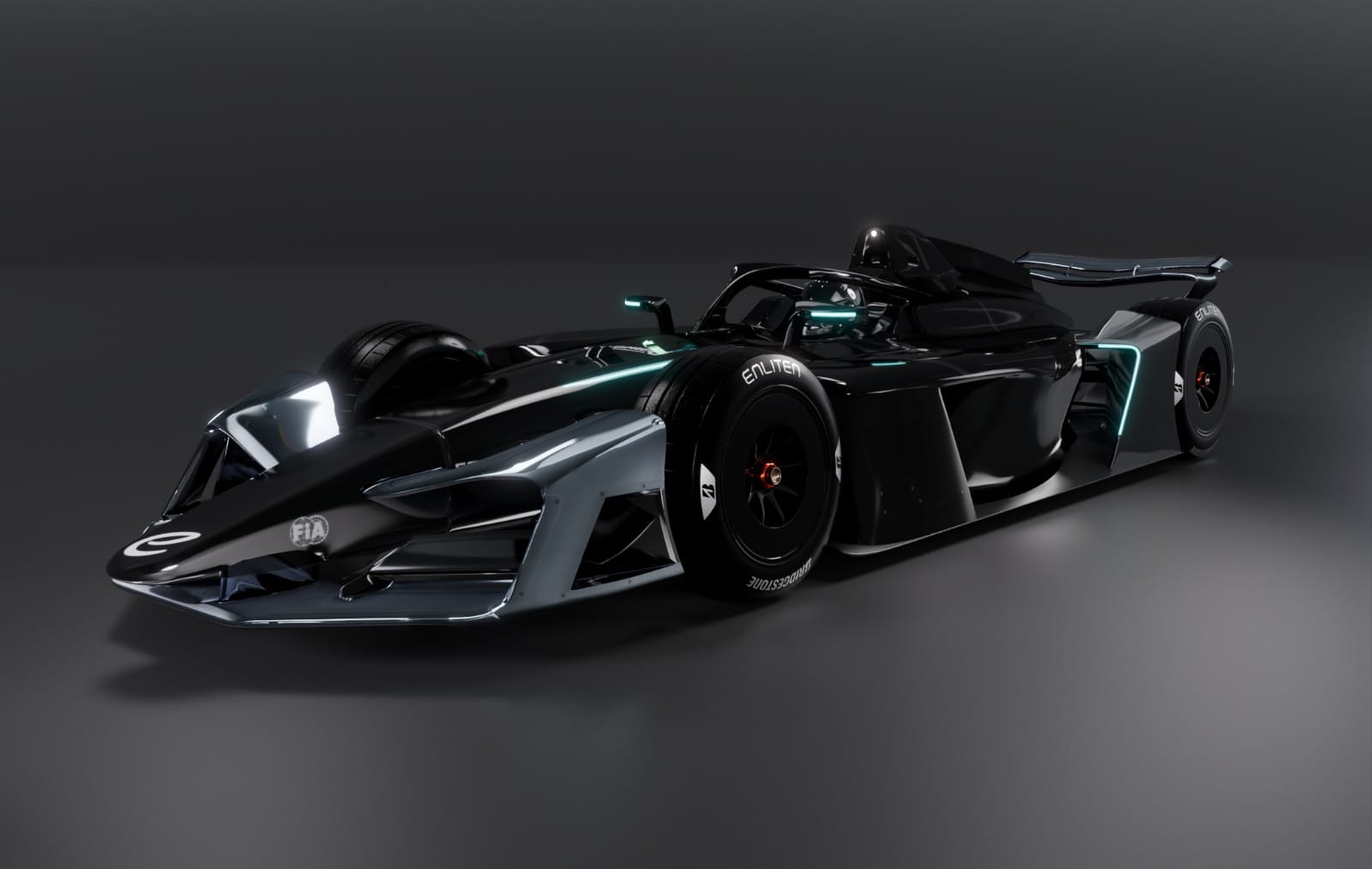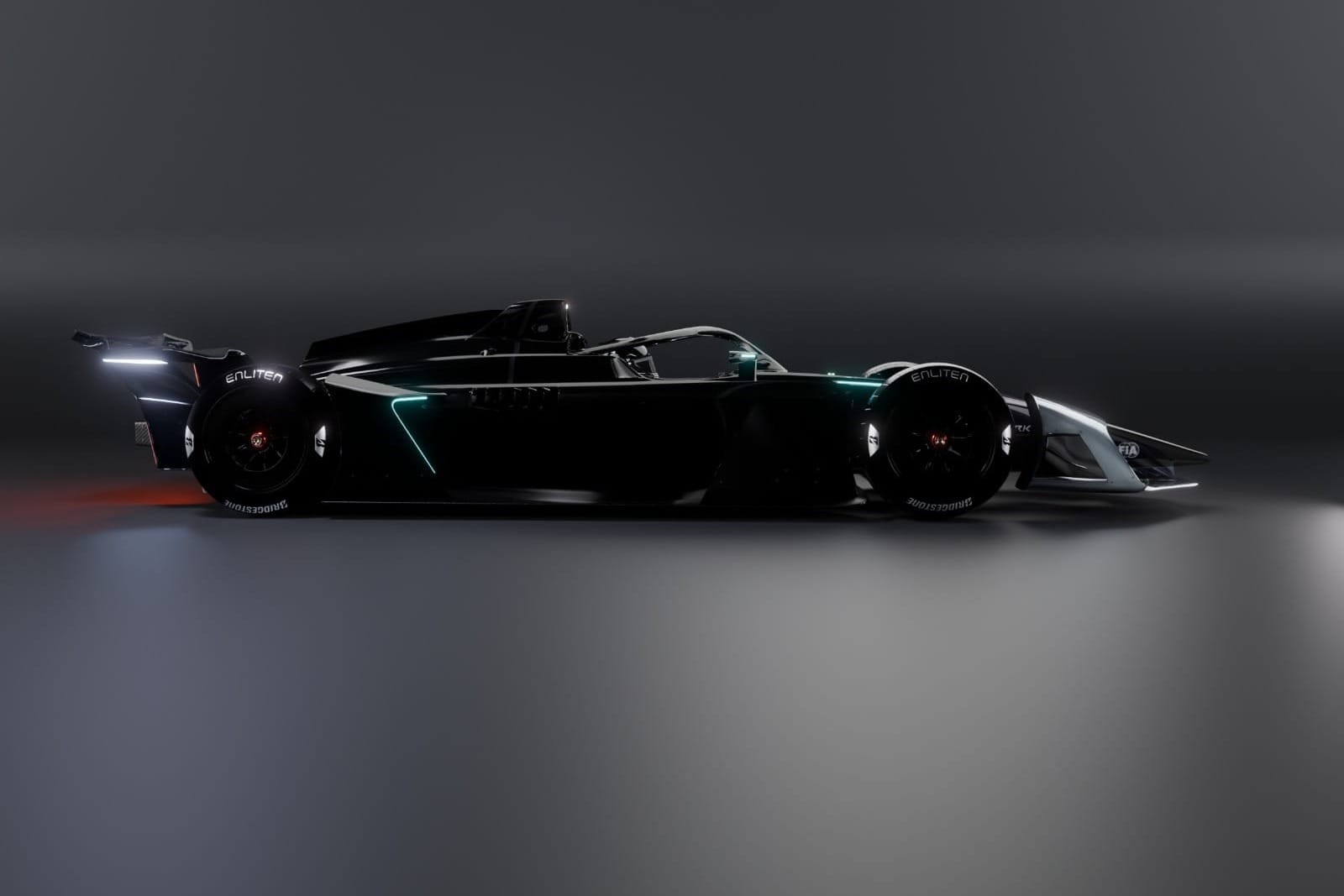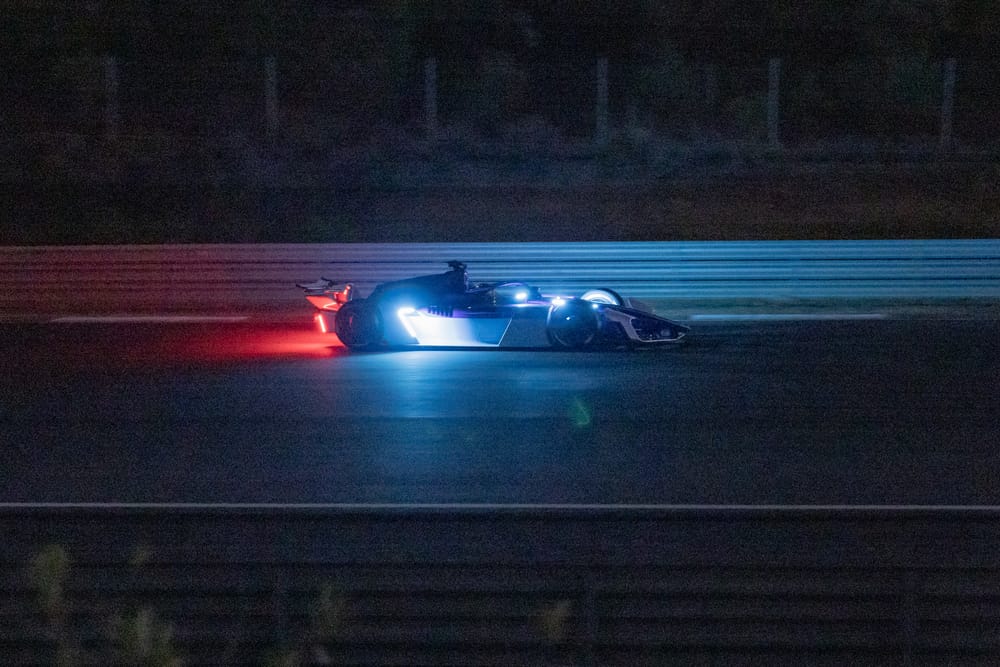Formula E and the FIA have released the first official imagery of the new Gen4 car that motorsport's only all-electric world championship will race from 2026 to 2030.
The Race first revealed a mock-up of the Gen4 car in July based on information we had gleaned. Wednesday's release is the first time the championship itself has revealed images of its new car.
The Gen4 car will be more powerful, larger and heavier than its Gen3 predecessor. It has already undertaken almost 8000 kilometres of testing with a special test car run by Spark Racing Technologies and the FIA.
Is this a game changer for Formula E?

The Gen4 car will run in permanent four-wheel-drive specification. On the current car, four-wheel drive is only active in the duel phase of qualifying, at the race start, and in attack mode.
And it will have a maximum power of 600kW, up from 350kW, while energy recuperation will also be increased from 600kW to 700kW.
Other key features will include a two-tiered aerodynamic package and also more freedoms for teams around the differential systems on the car. This is believed to be especially interesting for teams in opening up key development features around the project.
The car, which The Race has seen close-up recently, is noticeably larger and wider than the current Formula E car. It is 520mm longer than the Gen3 Evo, has a wheelbase of 3080mm, compared to the present 2705mm, and is 1800mm wide versus the Gen3 Evo's 1707mm.
With the initial evidencing work done on the prototype Gen4 car, the production vehicles have now been delivered to and assembled by the series' individual manufacturers.
Traditionally this has been where the car is really tested. One leading Formula E engineer told The Race this week: "The mule car never gets pushed hard enough in testing as the people that run it will never push it as hard as the teams.
"It's what happened in Gen3 testing where all was fine and then they started having more issues when the manufacturers started running the various components."
Formula E CEO Jeff Dodds told The Race that "a lot of the fairy dust happens once these cars make their way to our manufacturer partners".
"As we know, the [manufacturers] take something which is brilliant and make it kind of supersonic," said Dodds. "So we are very excited to see the reaction to this car when it's on track and delighted to be able to share it with you and with everybody else."
Dodds also told The Race that the traditional four-year rules cycle that Formula E has previously worked to is not a rigid format, opening up the possibility that Gen4 could either stay for longer or even that development could be accelerated more via an evolution or a complete new 'Gen5' model.
"We could launch a Gen5 car two years after launching a Gen4, if we had solid-state battery development or cell chemistry had developed to a point where we thought, 'Wow, we want to do this' or we went to slick tyres, or changed chassis," said Dodds. "Absolutely it doesn't have to be a four-year cycle."
Initial running has been completed in private using a powertrain derived from Helix UK (formerly known as Integral Powertrain) with a test car that has been predominantly been driven by James Rossiter.
The former DS Techeetah sporting director and Maserati MSG team principal has been ebullient in his praise for the pace and initial development of the Gen4 project.
Speaking at a media roundtable this week, the FIA's circuit sport director, Marek Nawarecki, added: "With this new generation you will see more development in terms of traction control, in terms of braking control, and all the features which will make this car even more efficient.
"But still with the performance versus reliability and energy efficiency being the key features of this car."
When the FIA defined with the manufacturers what the Gen4 car should have within it for the performance aspects, the road-to-track and vice versa elements were deemed crucial.
Jaguar, Stellantis, Nissan and Porsche all have an array of automotive products that consumers can choose from, so having relevance on how that technology is perceived on track and the other way via the circuit to the road was very important.
"If you look at mass production, there are more and more control systems which are added on all these electrical cars," Vincent Gaillardot, the FIA's technical lead on the Gen4 project, told The Race.
"So, the decision [was] for full freedom on manufacturers to use even more than traction control, torque distribution and on the acceleration and braking too.
"All these are fully open. And for the differential at the front, we have a supplier component at the rear is fully open, but we decided again to go to the same rules with an active diff where the actuator is within the FPK [front powertrain kit, which is spec-supplied by Marelli] but the control of the pressure and the working is under the manufacturer's or the team's responsibility.
"This is to give these cars maximum performance in the cornering, the rotation, the acceleration and the braking force to show how it's easy to implement such a thing on an electric car."
The first real test

The first group test for registered Formula E manufacturers - Porsche, Nissan, Jaguar, Stellantis and Lola - will take place next week at Monteblanco in Spain.
An initial three days are allocated for these manufacturers to try out their own freshly built test cars. This will be the first of two group tests that will major on reliability, systems evaluation and defining at least an initial specification of tyres via new supplier Bridgestone.
The Race understands that potentially just one manufacturer will run a more or less complete Gen4 powertrain at the test. That's believed to be Jaguar.
The other four manufacturers are likely to have a Gen3 and Gen4 hybrid solution that is formed by using the current motors, inverters and gearbox within the Gen4 maincase design.
Porsche is expected to have one of its 2025-26 season racers, either Pascal Wehrlein or Nico Mueller, at the test, while Jaguar is set to use its new signings: race driver Antonio Felix da Costa and reserve and development driver Stoffel Vandoorne.
Stellantis will have new signing Nick Cassidy in the cockpit, while regulars Zane Maloney and Lucas di Grassi plus sometime Formula 3 racer Hugh Barter will test for Lola-Yamaha Abt. Barter drove for the team in the Berlin rookie test this summer.
Nissan is understood by The Race to have employed three-times Le Mans 24 Hours winner Benoit Treluyer. He was instrumental in the initial testing of the Gen3 design via an association with tyre supplier Hankook, which is in the last season of its four-year deal with Formula E.
How will Gen4 affect the calendar?

A key talking point for the Gen4 era will be if Formula E is comfortable racing on some of the tracks it currently competes on with such an increase in power, speed and likely improvement in laptimes.
Allied to that, the dimensions of the car are now such that envisaging them racing at London ExCeL or the present incarnation of the Tokyo street track feels cramped to say the least.
Answering a specific question on whether the Gen4 will be too quick and large to race on such circuits, Nawarecki said that "safety is already a question that we should keep on the top of".
He continued: "We have already made the full assessment of the tracks, the existing ones, and the tracks which possibly Formula E can go to.
"Of course, we have to consider higher speed, which is linked with the more potential energy that the car will have in case of any impact. But all those aspects have already been assessed by our safety department.
"The standards for safety are very strict. We already have a standard for the street racing circuits, as it is the case for Monaco, for Formula 1, and many other street circuits designed for this type of cars.
"We don't see, I would say, major blocking points on this. Probably on some tracks, we will need to do some adaptation compared to the current design of the track. But there will be no major changes in the design related to safety."
While Tokyo is believed to have room to be adapted and modified, the London ExCeL circuit does not have such a luxury and may have to be replaced - although Formula E Operations recently had a meeting to discuss the possibility of extending a deal beyond 2026.
Jaguar driver Mitch Evans - who has excelled at street tracks, winning at among others Rome, Sao Paulo, Monaco and Jakarta, reckoned that Formula E needs to try to maintain, if not expand on, its street track heritage.
"I love racing in London, so one part of me would be like, 'I'm happy to be racing in London', but I think the concern would be just coming from the size of the car," said Evans.
"There's definitely some tracks where it's going to be on the limit, I think, with Gen4.
"But on the other hand, I've got such a passion for street tracks, I don't want to keep losing those types of tracks, because I think it really fits them with the DNA of the category and I think it's a real challenge for us drivers.
"I just feel like we can't lose those street tracks, which was such a unique factor for Formula E for so long.
"Formula E knows what's best for the direction, so we'll have to wait and see what happens for the Gen4 calendar."



